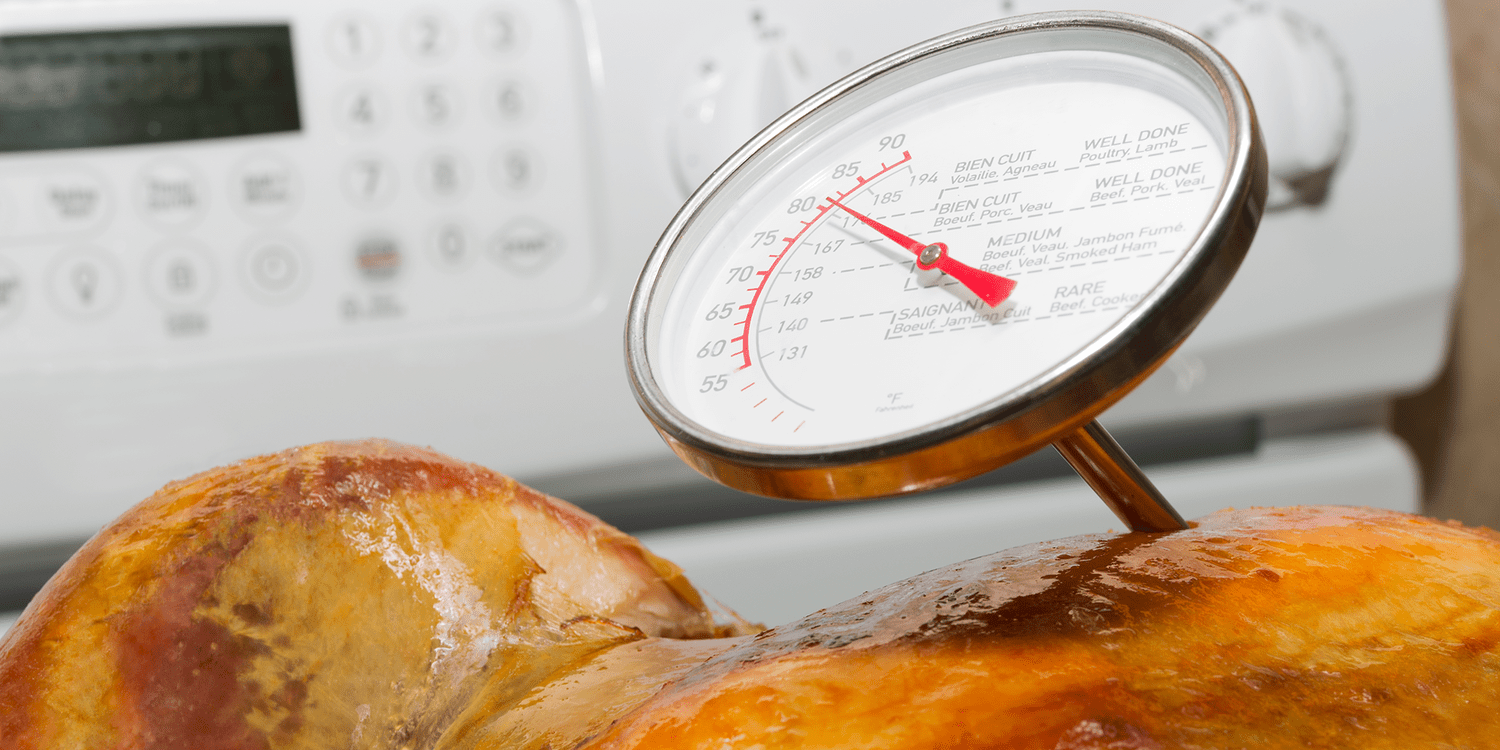Whether you’re roasting a whole bird or making candy from-scratch, knowing the temperature of your food as it cooks can make or break its sucess. What’s the best way to check the temperature? A thermometer! It’s simply the best tool you can stock for ensuring perfectly-cooked food. Not only will you get an accurate reading, but it’s also much easier (and safer) than guessing the temperature by touch.
However, not all thermometers are created equal, nor are they interchangeable. There are two different kinds of thermometers you’ll want to have in your kitchen — a candy thermometer and a meat thermometer. Here’s how to tell the difference between the two.

Meat Thermometers
Meat thermometers have a lower temperature range than that of a candy thermometer — most go up to 200 degrees F. This handy kitchen tool commonly resembles a pointed stick attached to a dial that contains the temperature. You’ll also find digital “instant read” thermometers that can provide greater accuracy. A meat thermometer is useful for checking the temperature of beef tenderloin, roasted turkey, grilled chicken breasts, whole roasted fish, and more.

A meat thermometer is crucial when cooking large cuts of meat such as whole ham or turkey, pork tenderloin, roast chicken, or meatloaf that require a safe minimum internal temperature (if you aren’t sure of these temperatures, reference this handy chart). When cooking beef tenderloin, prime rib, or filet mignon, a meat thermometer can help you nail a perfectly juicy medium-rare.
From time to time, it may be necessary to re-calibrate your meat thermometer to ensure it’s giving you an accurate reading. Now, put your meat thermometer to the test with these tasty recipes:
- Easy Marinated Pork Tenderloin
- Unbelievable Chicken
- Best Ever Meat Loaf
Candy Thermometers
A candy thermometer is used to measure temperatures up to 400 degrees F. This long, skinny thermometer is commonly used when making hard and soft candy such as brittle, pralines, toffee, fudge, and more. These candies all start with a common ingredient — sugar — that’s then boiled to a specific stage such as “softball” or “hard crack.”
Knowing the exact temperature of the sugar is key, as cooking it to the proper stage determines the outcome of your candy. For this reason (and because sticking your finger in a pot of boiling sugar is simply a poor idea) a candy thermometer is an extremely useful tool.

You may also use a candy thermometer when making homemade caramel sauce, sugar syrup, and when preparing oil for deep frying. When making fried okra, fried chicken, doughnuts, or other deep-fried delights, it’s crucial to bring your oil to the proper temperature range (typically 350 degrees F to 375 degrees F). If the temperature is too low, your food will absorb too much of the oil and become greasy. If the temperature is too hot, your food will burn.
Ready to test out your candy thermometer? Here are a few delicious recipes to try:
- Chewy Caramel
- Best Honeycomb Toffee Candy
- Triple Dipped Fried Chicken
While you may think you can get away with using a meat thermometer in place of a candy thermometer (or vice versa), this is definitely not the case. A candy thermometer’s long, narrow shape allows you to safely check the temperature of hot sugar or hot oil without burning yourself. A meat thermometer is much shorter in length, and its temperature range isn’t typically high enough for cooking sugar. Plus, the pointed end of a meat thermometer makes it easy to stick into a large cut of chicken or meat, as opposed to the rounded end of a candy thermometer.




